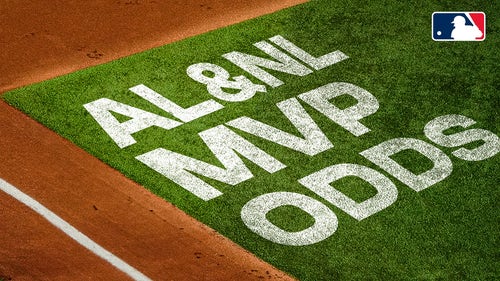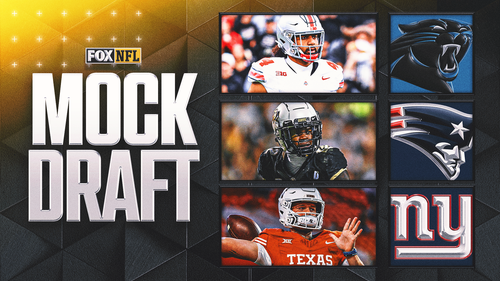
Scenes from an afternoon at Oakland Coliseum — now a sore sight for few eyes
OAKLAND, Calif. — A picturesque, cloudless afternoon in the Bay. Nearly 47,000 seats occupied by just 4,159 (announced) attendants. No matter how few show up, the show goes on.
Welcome to another day of professional baseball at the concrete monument of hopelessness and neglect better known as Oakland Coliseum.
Here, possums live in the walls. Sewage overflow is a regular occurrence. Most of the concession stands are shuttered. Music and announcements are played from a single, colossal speaker high above the right field seats. One employee mentioned a set of forgotten go-karts hidden somewhere in the depths of the upper deck. NFL memos and regulations dot the back hallways, even though the Raiders left in 2019. The outfield concourses are eerily abandoned, open for adventure with a twinge of a post-Olympics Village.
Built in 1966 for the team’s arrival two years later, the Coliseum has its charms and its quirks, but it has most certainly not aged well. Some passionate fans endearingly call it The Last Dive Bar, sticky, beer-stained floors and all. Others, saddened by its worn-down visage, find its condition too demoralizing to face. It is a stadium well beyond its expiration date.
Fans and players, quite simply, deserve better.
Most mornings in the East Bay, even in springtime, start with a heavy morning fog. But often, that gray haze gives way to sunshine by midday. That is the daily expectation for folks who call this place home; that combination of patience and optimism is an essential part of the East Bay experience. The Oakland A’s, unfortunately, are a rainy day.
On April 19th, the Athletics announced that they’d purchased land off the Las Vegas strip, with the goal of erecting a new stadium in the desert by 2027. After 20-plus years of fraught and fruitless negotiations with local government over a new East Bay ballpark, this was the organization’s biggest step toward leaving town. And while the Vegas plan is far from a done deal, the organization’s open embrace of Nevada taxpayer funding has only served to further alienate fans who have bled green and gold since the team’s arrival in 1968.
And so it is no surprise that on May 15th, the last-place Athletics reported 2,064 tickets sold, the third-lowest recorded total in MLB history. The actual attendance was very likely even lower. By comparison, two days later, approximately 2,000 people lined up in the Coliseum parking lot at 9 a.m., just for the chance to purchase early-access merchandise for the K-Pop concert happening next door. This was the setting as I journeyed into this vacant husk of a ballpark to take in a Wednesday matinée against the Arizona Diamondbacks.
The first thing you notice, when attending an Oakland A’s game in 2023, is the silence. The thundering drums of the right-field bleachers, which for years served as the stadium’s soundtrack and heartbeat, are no more. In their place are a row of protest signs, draped over the right-field railing with spray-painted slogans like "Stop Blaming the Fans" and "Sell the Team."
No more than 10 people sat in the once-packed bleacher section as two front-row die-hards pridefully waved huge green and gold flags into the void.

One can still have a wonderful time in a decaying, unspectacular sports venue. The Coliseum is no worse off than many college football sites, no less shiny than many European Soccer stadiums. But this is ... not that. That requires an objectively good on-field product. And this? This is a roster primed to challenge for the worst record in league history, seemingly in order to continue pushing fans away to better justify an eventual move to Vegas.
At one point, Diamondbacks right fielder Corbin Carroll tossed a souvenir into the right field seats. The ball clanged off a vacant chair and rolled to a stop down the cement aisle. In a typical stadium, this would have been cause for a mad dash to the ball. Instead, a sunburnt man in a graphic tee slowly rose from his seat, sauntered over to the ball and placed it in his pocket before leisurely returning to his seat.
A few rows over, an older, gray-haired fellow in a flower-patterned aloha shirt yelled out to the lucky fan, "C’mon, now. Hold the ball up and give us all a ‘woo woo.’" The ballhawk reluctantly obliged. The cynical self-awareness among the A’s faithful was equally hilarious and sad.
It’s worth noting again that nobody shows up because the team is terrible and the ballpark is disintegrating. The club cries low attendance numbers and declines to re-invest in the facility and the on-field product. The club gets worse and the yard gets more rotten, we make our jokes online and the cycle repeats.

The proud few still attending A’s games are likely either blindingly in love, excruciatingly bored, irrationally hopeful, creatures of habit, emotionally dependent, unable to let go or, in some cases, all of the above. This particular sunny Wednesday, on which the A’s lost 5-3, their MLB-worst record falling to an irrelevant 10-35, the crowd was mostly a sparse combination of hooky players who smuggled their own beers in, high-pitched elementary school children on field trips, retirees in sun hats with time to kill and scorebook-toting diehards in Jarrod Parker jerseys.
In fact, very few fans wore the uniforms of current A’s players. Given the state of the team, that is understandable. Most backs are labeled with "CHAPMAN," "OLSON," "DONALDSON," "CÉSPEDES," "BASSIT," "MURPHY," or other bygone franchise icons shipped to far away lands for prospects and peanuts. That dynamic is another reminder of how the Coliseum is a rundown museum frozen in time.
Magic once happened here in part because the fans made it so. But for too long now, they have received precious little in return.
Everywhere you look, you see what this place and this team used to be: murals on the concourse celebrating the great A’s of yesteryear and their many accomplishments; the gargantuan tarp covering the center-field seats with the franchise’s retired numbers; pictures of Hall of Famers and World Series titles hung haphazardly to abandoned hallway walls. There is a rich history in the Coliseum — only four active MLB stadiums have hosted more games — but there is a difference between preservation and stasis, between commemorating the past and refusing to adapt to the present.
Behind section 115, a broken pay phone is affixed to the wall. It has faux wooden paneling, decades of grime and no dial tone, although the buttons still beep when pressed. It is a harmless appendix from a bygone era, one that most organizations in professional sports would have removed long ago. Consider it a charming, disheartening shrine to what happens when a facility, and by proxy, a fan base, gets left to rot by those responsible for its stewardship.
"Wait, let’s take a picture before we leave," one mother said to her two teenage sons as they exited the stadium. "We don’t know if we’ll ever be back here."

Jake Mintz, the louder half of @CespedesBBQ is a baseball writer for FOX Sports. He played college baseball, poorly at first, then very well, very briefly. Jake lives in New York City where he coaches Little League and rides his bike, sometimes at the same time. Follow him on Twitter at @Jake_Mintz.










